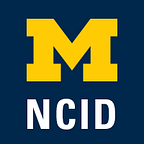Nonbinary Identities and Individuals in Research, Community, and the Academy
A Series Beyond the Gender Binary
Introduction by series editor Shanna Katz Kattari, assistant professor at the University of Michigan School of Social Work and Department of Women’s Studies (by courtesy) and core faculty in the Center for Sexuality and Health Disparities
Nonbinary, genderqueer, genderfluid, gender nonconforming, agender, and/or two-spirit individuals have always existed; our world just has not always recognized them as such, and often has taken action to try and harm or destroy those who are outside of binary systems of gender that come out of white, colonized, Christian ideals. However, even as researchers and society are doing a better job recognizing and upholding transgender experiences, much of the research with this population, and policies that exist continue to erase and actively harm nonbinary individuals.
While many research studies and even campus application forms (for student, staff, and faculty) have moved from a simple man/woman option to man/woman/transgender (which is problematic in that it views transgender people as one monolith), or slightly more nuanced with man/woman/trans man/trans woman, these options only touch the tip of the iceberg regarding gender, while continuing to invisibilize nonbinary people. Given that a recent 2015 study of trans individuals in the United States found that over a third of the trans community identifies as nonbinary, this is a huge omission. Bathrooms that force individuals to select between two genders can be incredibly stressful for those whose gender does not align with one of the two options, and in fact, can be physically dangerous as well. Experiencing colleagues and students using the wrong pronouns over and over, being told not to stir the pot with your identity, and getting “lady” or “sir” when you use neither are all examples of transphobic microaggressions, which can have lasting correlations with mental health.
It should be noted that I, editor of this collection, am myself cisgender (non-transgender); there are few trans and nonbinary faculty members in many academic spaces due to so many of the issues discussed within. Many of those who do have a position in the Academy feel unsafe coming out as their authentic selves in those spaces, and those who do are often pressured away from gender related research (seen as “me-search”) and practice. Given that so much of the research on trans and nonbinary populations is created by cisgender academics, often without any input from trans or nonbinary individuals themselves, I thought it was necessary to create space for a series where we center the voices of nonbinary people and hear their stories, experiences, and research directly.
As discussed by Elroi J. Windsor and Betsy Lucal, some nonbinary academics have made it successfully to and through the tenure process, but had to feel incredibly strong in their tenure packet to have even been open about their identity and pronouns (or lack of pronouns) to get to that point. These challenges of navigating can be even more complicated for nonbinary people of color, with Jan Estrellado, Amanda Breen, and G. Nic Rider speaking to this double burden. Katta Spiel & Emeline Brulé discuss some of this issues they’ve run into, constantly having to answer questions about their genders, and also the challenges of working with youth that also are nonbinary, but have unsupportive parents, and how they must balance their own truths with their research spaces.
This liberation of space is not a band-aid fix as people often want it to be. Simply mandate pronoun-go-rounds isn’t the way; Oliver Haimson and Lee Airton offer ways to engage around pronouns that don’t further harm individuals in those spaces who may not be out or comfortable sharing for a variety of reasons. Similarly, T. J. Jorian and Z. Nicolazzo strongly caution against the cis-centric push to re-create the extant and problematic gender binary by creating a new binary of transgender people versus nonbinary people, as if they are singular entities.
Nonbinary people exist in the Academy at every level; both undergraduate and graduate students, staff, and among all types of faculty. The pieces in this series, and the resources and references linked in these pieces, all provide not only the stories of these members of the Academy, but also tangible concepts for how to improve academic spaces to make them more inclusive and affirming for people of all genders. I hope this series serves as an incubator for more of these conversations to be at the forefront, and to spark action among cisgender accomplices in making policy shifts, and then moving back to create space for nonbinary people to fill with their knowledge, practice, and research.
